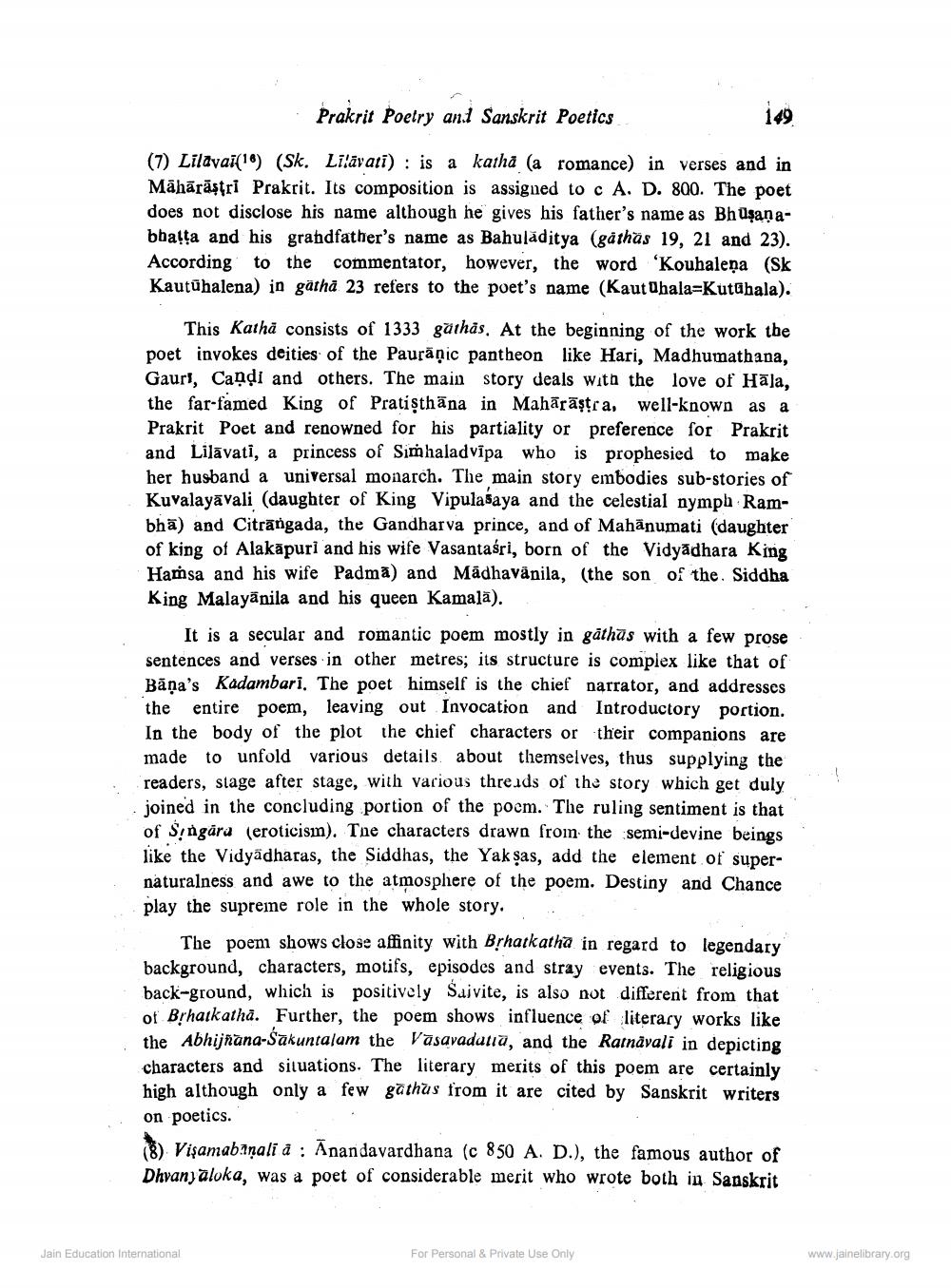________________
Prakrit Poetry ani Sanskrit Poetics
(7) Lilavai(19) (Sk. Lilāvati) : is a katha (a romance) in verses and in Māhārāştri Prakrit. Its composition is assigned to c A. D. 800. The poet does not disclose his name although he gives his father's name as Bh Uşanabbalta and his grandfather's name as Bahuladitya (gäthäs 19, 21 and 23). According to the commentator, however, the word 'Kouhalena (SK Kautühalena) in gatha 23 refers to the poet's name (Kaut Ohala=Kutuhala).
This Katha consists of 1333 găthas. At the beginning of the work the poet invokes deities of the Paurāņic pantheon like Hari, Madhumathana, Gauri, Candi and others. The main story deals with the love of Hāja, the far-famed King of Pratişthāna in Mahārāștra, well-known as a Prakrit Poet and renowned for his partiality or preference for Prakrit and Lilāvati, a princess of Simhaladvīpa who is prophesied to make her husband a universal monarch. The main story embodies sub-stories of Kuvalayāvali (daughter of King Vipulasaya and the celestial nymph Rambhā) and Citrāngada, the Gandharva prince, and of Mahānumati (daughter of king of Alakāpuri and his wife Vasantaśri, born of the Vidyādhara King Hamsa and his wife Padma) and Mādhavänila, (the son of the. Siddha King Malayānila and his queen Kamala).
It is a secular and romantic poem mostly in gāthas with a few prose sentences and verses in other metres; its structure is complex like that of Bāna's Kadambari. The poet himself is the chief narrator, and addresses the entire poem, leaving out Invocation and Introductory portion. In the body of the plot the chief characters or their companions are made to unfold various details about themselves, thus supplying the readers, stage after stage, with various threads of the story which get duly joined in the concluding portion of the poem. The ruling sentiment is that of Singåra (eroticism). The characters drawn from the semi-devine beings like the Vidyadharas, the Siddhas, the Yakşas, add the element of supernaturalness and awe to the atmosphere of the poem. Destiny and Chance play the supreme role in the whole story. .
The poem shows close affinity with Brhatkatha in regard to legendary background, characters, motifs, episodes and stray events. The religious back-ground, which is positively Sajvite, is also not different from that of Brhaikatha. Further, the poem shows influence of literary works like the Abhijñana-Sakuntalam the Vasavadata, and the Ratnävali in depicting characters and situations. The literary merits of this poem are certainly high although only a few gathus from it are cited by Sanskrit writers on poetics. (8) Vişamabiņali à : Anandavardhana (c 850 A. D.), the famous author of Dhvan, aloka, was a poet of considerable merit who wrote both in Sanskrit
Jain Education International
For Personal & Private Use Only
www.jainelibrary.org




